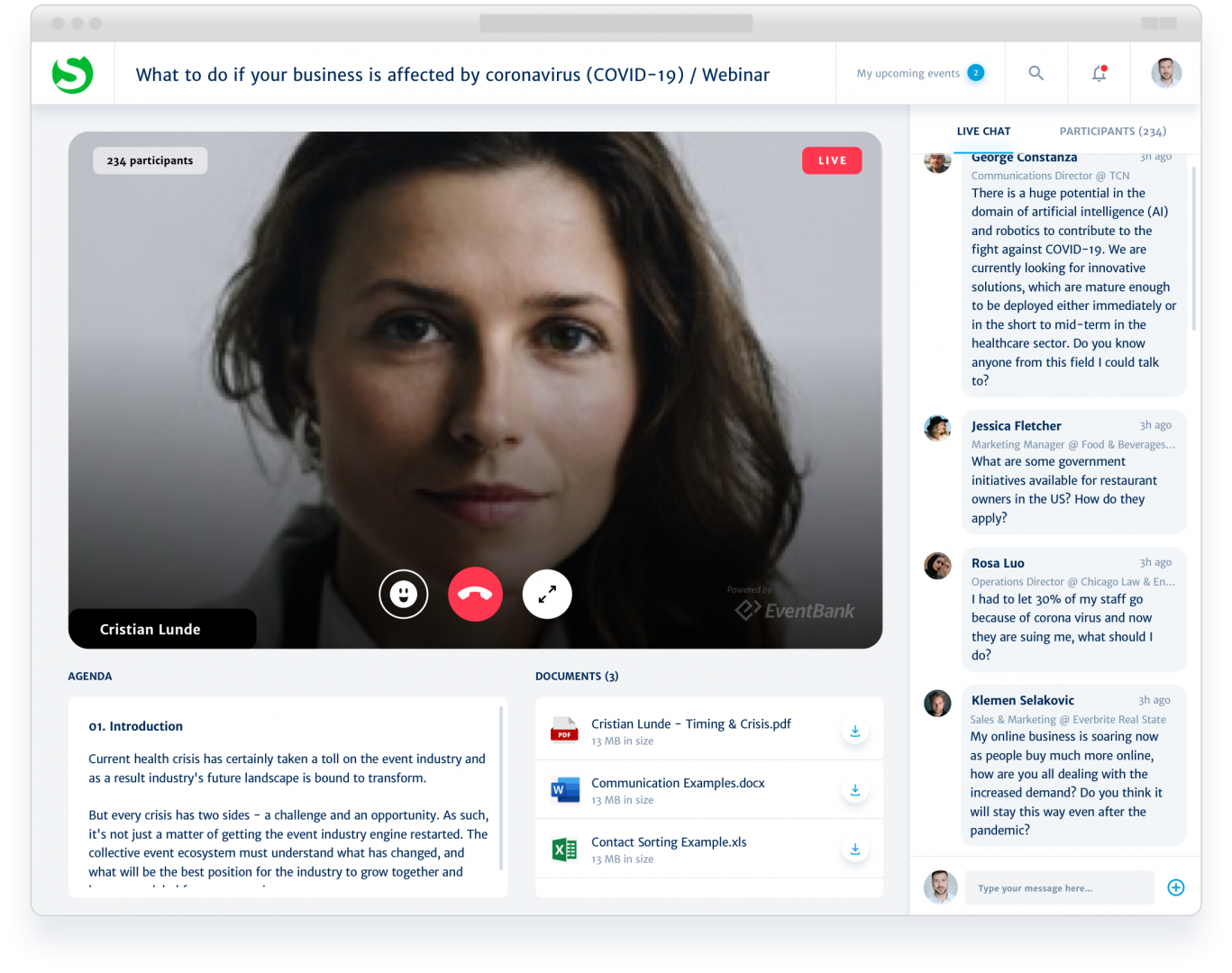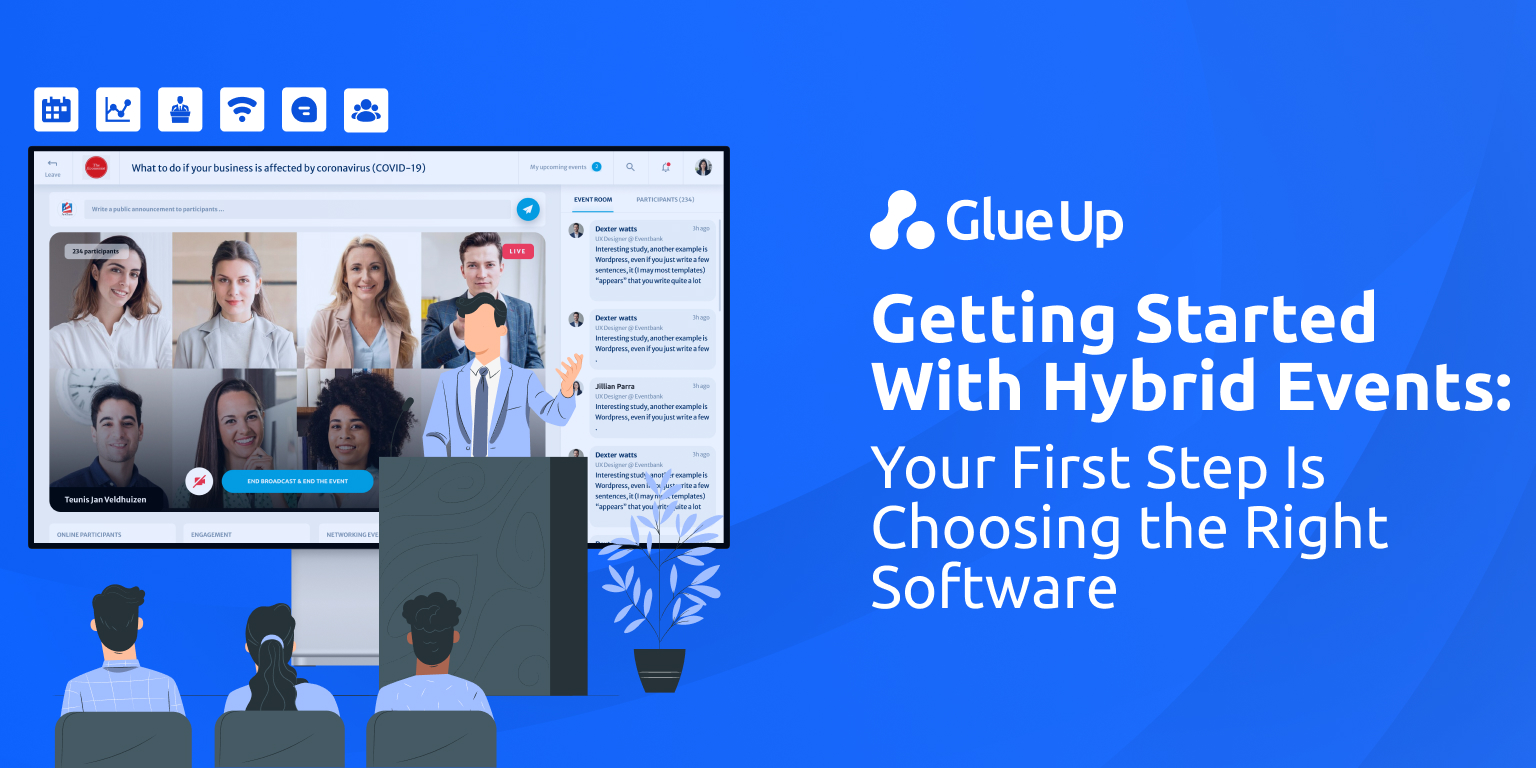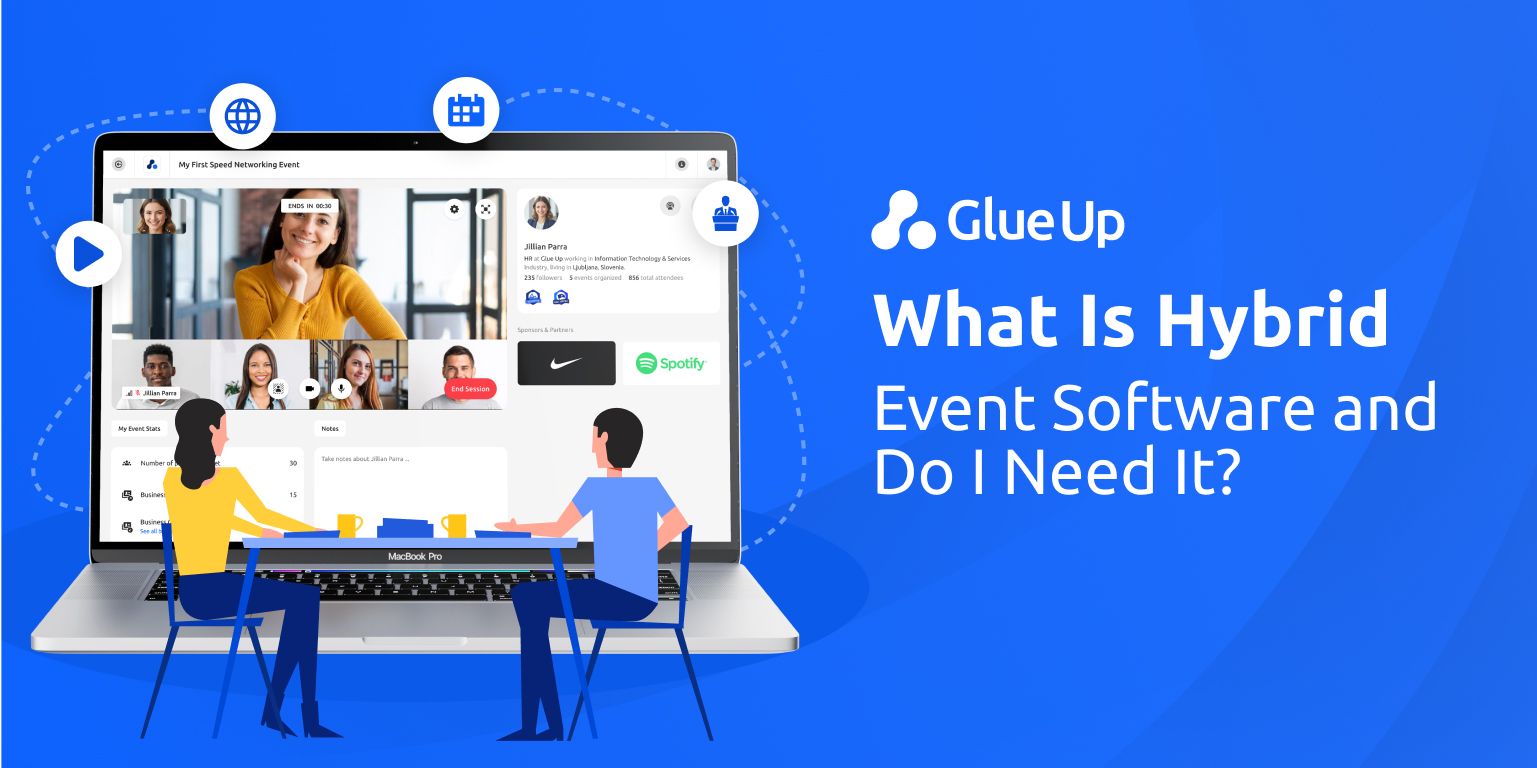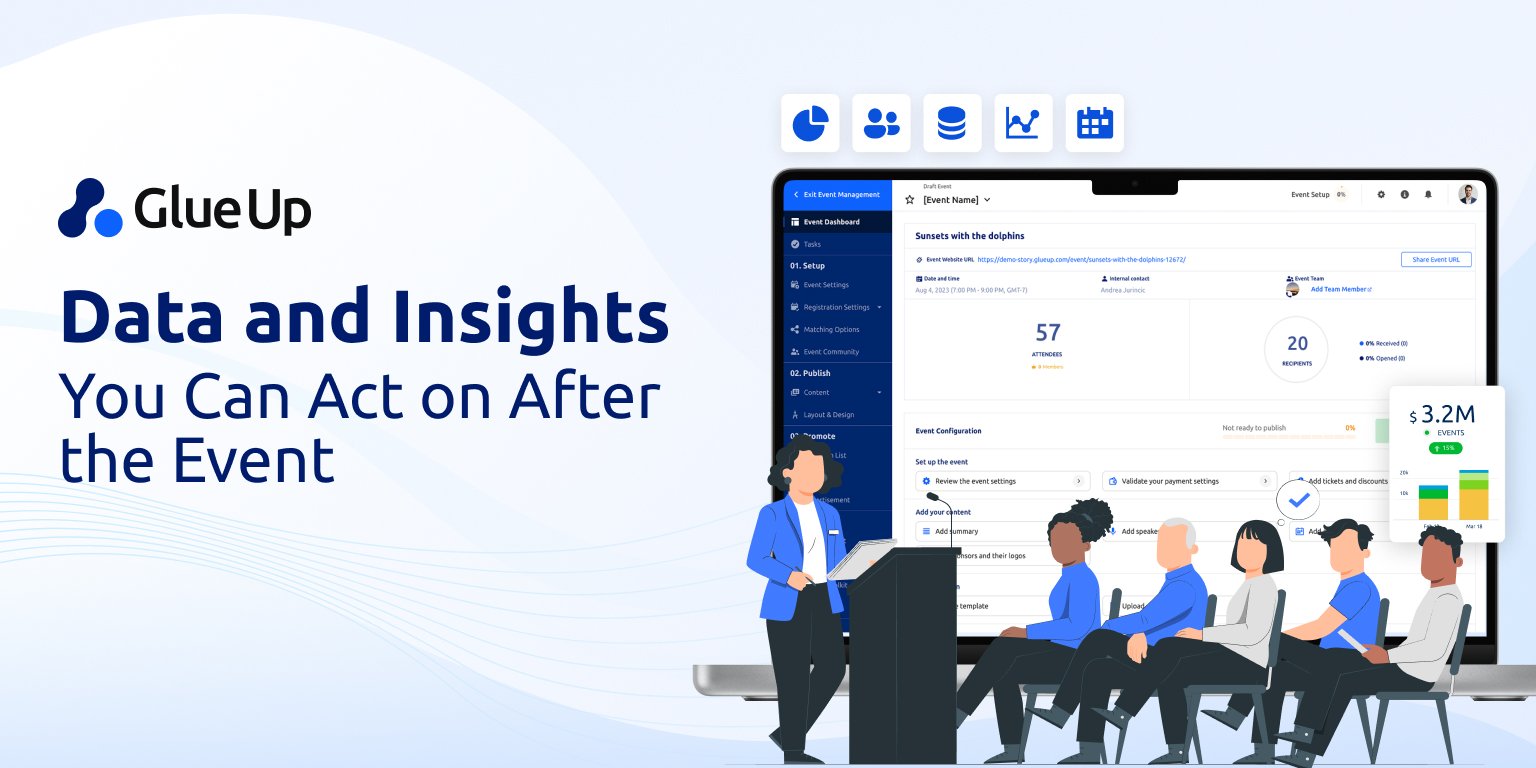
We always like to tout the effectiveness of attendee tracking, analytics, and personalization for the purpose of gauging event and webinar success, but at the end of the day hearing feedback from the attendees themselves will always trump any analytics.
However, you can mess up how you deliver a survey by not following some best practices like:
- Choosing a Decent Survey Platform
- Crafting Short and Sweet Questions
- Explain the Survey’s Purpose
- Never Require 100% Completion
- Prioritize Important Questions First
- Mention the Estimated Completion Time
- Share the Results
1. Choosing a Decent Survey Platform

Surveys aren’t done on paper anymore, events and webinars these days can get into the thousands of attendees, and going digital with survey deliver make it easier to deal with all the responses.
This however makes it less engaging, as a lot of attendees feel a need to complete a paper-form survey handed to them during an event than if it just arrived in an email in their inbox.
So from the get-go, dealing with digital surveys will take some tact to make them engaging so you can maximize their effectiveness. It also goes without saying that webinars are solely digital surveys anyways.
Choosing an effective survey platform or provider is entirely up to how you deal with your digital attendee engagement, and likely that revolves around using a CRM or event management software.
There is notable software for specializing in surveys out there like SurveyMonkey, but it’s important to make sure you’re automatically updating attendee profiles in your CRM automatically with responses, and for that, please read their integrations page for more details.
For a more embedded experience, event management platforms are offering surveys built into their apps or even their email marketing platforms. These are native, internal integrations that likely work much better and remove an unnecessary cost from the software side of things.
As for what to look for in a survey tool, the only real importance is how much editing power you have over the tool and how that data is used once collected.
Most tools do a good job of this as survey tools have become more standardized over time, but still, make sure you have some available admin rights in order to follow throw with more of our advice coming up in this article, like for instance, the ability to give Skip Logic to survey questions.
2. Crafting Short and Sweet Questions
Short and sweet questions easy to answer, and give probably the same information as to what you’re looking for.
A rookie mistake when surveying anyone is that you want them to be ultra detailed with their answers and get as much feedback as possible from one subject. It’s not possible, and frankly it just scares people away from starting it.
Your questions should be directly asking what you’re looking to improve. Do you just want a score of 1 to 10 how good was the event or webinar they just attended? Simply ask that.
You can also extend these qualitative or multi-choice questions a bit longer, maybe towards 5-10 questions if they’re all equally short and simple too. Some people seem to have an obsession with completing fill-in questions, so they may actually complete it in full.
No need to ask them to write down their experience, it’s just not necessary, but by all means, leave a comments section at the end anyways for their optional feedback.
However, if you need constructive feedback, now is the time to ask one or two open-ended questions that are specific to what you feel you can tackle coming up.
Asking how the A/V set up was when you have no budget for new A/V equipment is likely the wrong question since it’s not something actionable. So make sure when you ask constructive questions, they're questions with whom’s answers can be acted upon directly.
3. Explain the Survey’s Purpose

Make sure in your delivery or promotion of the survey after your event, that you explain the purpose of the survey.
Everyone knows what a survey is, but if you can explain why you’re surveying them and what that survey may lead to, it would actually propel some individuals to complete the survey.
We wish we had more tips for you, but this is as simple as it gets, add a message in your delivery that shows your intent of the survey and what it may lead to.
For instance if you’re looking to improve speaker quality at events and webinars you host in the future, maybe you should just say that in your survey delivery email: “Your answers will help us improve the quality of speaker selection in the future.”.
4. Never Require 100% Completion
In any survey, never require a single question. Yes, you may get bogus feedback, missing data, and so on, but missing data is better than no data. Some questions may come off as too uncomfortable, or maybe they just don’t have feedback or anything to say.
Making it non-compulsive to complete every single question will lead to more actual submissions of feedback, and overall you’ll have more data to use, even if every delivery was not 100 percent complete.
When analytically looking at this data though, it’s important that if you have qualitative questions, do not divide your percentage of completion by total number of survey submissions, but by submissions that have answered that question and not skipped it like others may have.
5. Prioritize Important Questions First
Piggybacking off our advice on never requiring 100% completion of a survey, we still want you to get the pertinent feedback that’s important for you, and so our advice is to make sure that the first questions in your survey are ordered from most important to least important.
Doing so will ensure the of those who do attempt to complete, or mostly complete, a survey will deliver your most valued feedback first.
6. Mention the Estimated Completion Time
In the delivery of your survey, mention either how many questions the survey is, the estimated time of completion, or both.
It’s a simple gesture that helps your recipients better gauge their time-cost of completing the survey and likely will entice more people to complete because it’s not as long as they first though.
Likely because you followed our advice on short and sweet questions, right? ;)
7. Share the Results

Finally, after the survey period is over, be sure to share the results of the survey with those that completed the survey.
You can even use this aspect to promote users to finish the survey when you deliver it. By saying only those that complete the survey will receive the results, you’ve added some exclusivity to the recipients and likely incentivized the curious ones to complete the survey.
Be sure that when sending the survey results, you understand the survey feedback type. If it was a simple multi-choice or qualitative questionnaire, then you can probably just deliver them directly as-is compiled into a nice graph or chart.
However, a questionnaire with more personalized feedback might need to be collected, reviewed, and then summarized for recipients of the results. Make sure it shows not only a summary of the major feedback but also it’s a great time to either reinforce or otherwise double down on what action you’ll take to improve future events based on their feedback.
If you’re looking for a way to not only deliver actionable surveys to your audience or members, but also a way that tracks user experience, their survey answers, and actions taken, consider booking a demo with Glue Up and we’ll show you how our engagement software solution can deliver.



